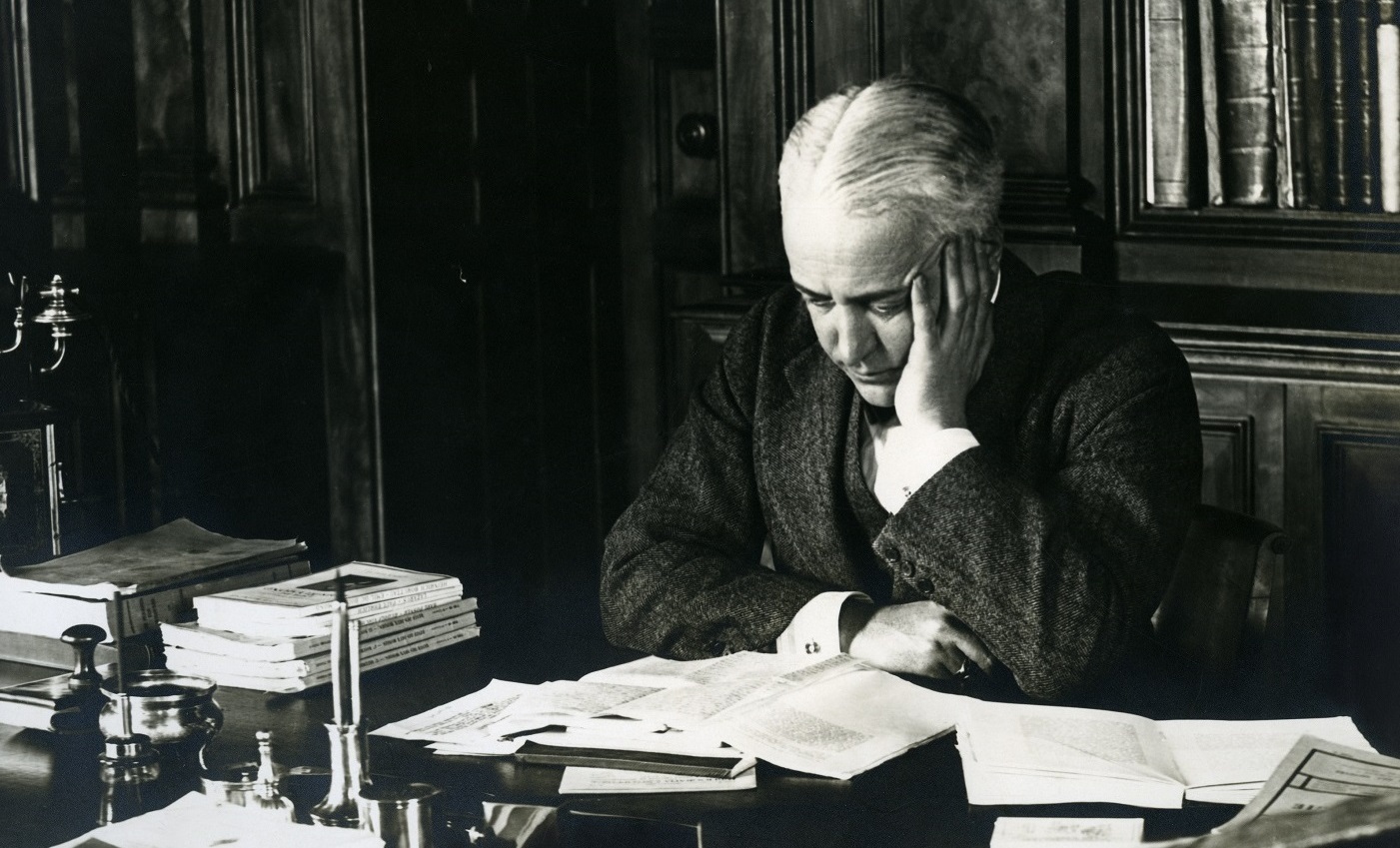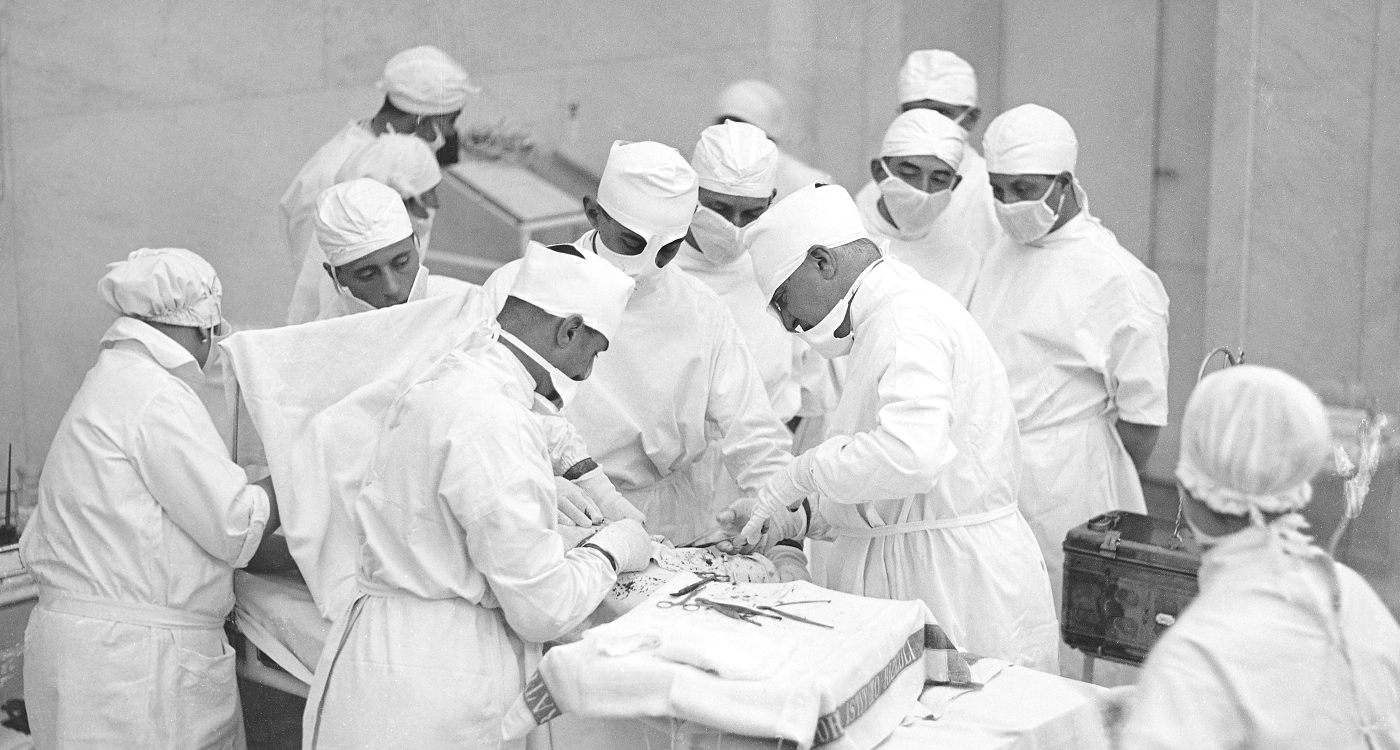
Born in Bologna 1st March 1880, son of a surgeon and nephew, on his mother's side, of the poet Panzacchi, Vittorio Putti inherited his love for his town and medicine from one, and his poetic eloquence and refined stile from the other. After brilliantly obtaining his high school diploma, he went on to graduate in medicine in July 1903, showing great interest in pathological anatomy. In August, while carrying out studies using the microscope in the laboratory of Rizzoli Institute, Putti, in spite of himself, found himself accepting a proposal by the then Director, Professor Codivilla, to be an assistant. Little did he know he would never leave again.
After doing a specialisation course in radiological technique in Munich in 1905, he went abroad again in 1907 to get up to date with the level of orthopaedic surgery attained in German, Austrian and Hungarian clinics.
His career inside the hospital was in rapid ascent: he became Vice-Director of the institute in 1909, appointed Clinical Director, and finally became sole director in 1915. His university career was also brilliant: he became a teacher in clinical orthopaedics in 1910, clinical surgery and operative medicine in 1916 and he was appointed full professor of Bologna University in 1919.
During the First World War Professor Putti had to face the big problem of accommodating the ever-increasing number of wounded soldiers at the institute. As a good organiser, after turning all areas, including the ex library and the monks' refectory, into wards, he increased the accommodation capacity by building a pavilion in front of the main entrance, with 500 beds.
He also found a new site for the Orthopaedic Workshop (until then housed in the old complex, it was transferred to a building along the scenic road that leads to the city), which soon became famous throughout Europe, as well as number one in Italy. This is where artificial limbs were made, prostheses for thousands of disabled people, which were not only functional and rational, but also aesthetic, considering they were made by Augusto Fusaroli, the same craftsman who made the furniture for the present library and private study.
When the war was over, Putti went back to tackling daily problems. In 1923, after overcoming some obstacles from the administration, he turned an old hotel of Cortina d'Ampezzo into an efficient centre for heliotherapy to treat osteoarticular tuberculosis. He named the clinic 'Codivilla' after his master.
During the following years the success of Rizzoli and the fame of Professor Putti grew so quickly that a fellow surgeon, Henry Platt (in a study of the history of orthopaedics in Europe from 1900 to 1950) said that during that time the institute in Bologna was the 'Mecca of Orthopaedics'.
A talented surgeon, excellent organiser and charismatic person, Professor Putti attracted not only young talent yearning to learn new operative techniques in the surgery of moving organs, but also famous doctors from all over the world.
He was involved in all the major problems of orthopaedics and introduced new methods and original instruments. He demonstrated the method of treatment for ankylosis, congenital dislocation of the
hip, posttraumatic deformities, limb shortening, paralysis and bone tumours. His contribution to surgery of peripheral nerve lesions and his work on the technique of kinematic amputation and prosthesisation of the knee joint put him among the greats of orthopaedics.
He was also one of the founding members of S.I.C.O.T. (Societe Internationale de Chirugie Ortopedique et Traumatologie), honorary member of Italian, American and English Societies and foreign correspondent for the Journal of Bone and Joint Surgery since January 1928.
He was a guest at several congresses throughout Europe and, after his first transatlantic journey in 1919, he was invited to speak at conferences in North and South America. South American pupils considered him to be the founder of orthopaedics in their countries.
He was also interested in the history of medicine as testified by the 26 publications of a historic nature, among which the fine essay on Berengario da Carpi with the Italian translation of the treatise 'De fracture calvariae sive cranei,' published in Bologna in 1937, and the monography 'Historical artificial limbs' published in New York in 1930.
He was a keen bibliophile and a collector of anything that concerned the world of medicine and decided in his will that: 'the scientific library and annexes will become the property of the Rizzoli Institute so that all scholars may take advantage of it.'
An edition of the book by Celso and one by Paolo d'Egina, bought from a book stand for a few cents in 1904 (as Augusto Anzoletti, his friend and colleague remembers), forms the basis of one of what experts consider the richest and best private collections of antique medical books in the world, not so much for quantity as for quality of the texts in it.
The professor chose the books he bought very carefully (from antique dealers all over the world). He bought several copies of the same book or by the same author, choosing the rarest, with precious and original bindings, copies with dedications or those that belonged to famous people.
In the study, on the bookshelves, are some of the 17 manuscripts, 66 incunabula, 238 sixteenth century books, 957 rare volumes and pamphlets that belonged to the collection.
Putti died suddenly, struck down by angina pectoris 1st November 1940, at the age of 60, leaving an empty space in the hearts of those who loved and admired him.

